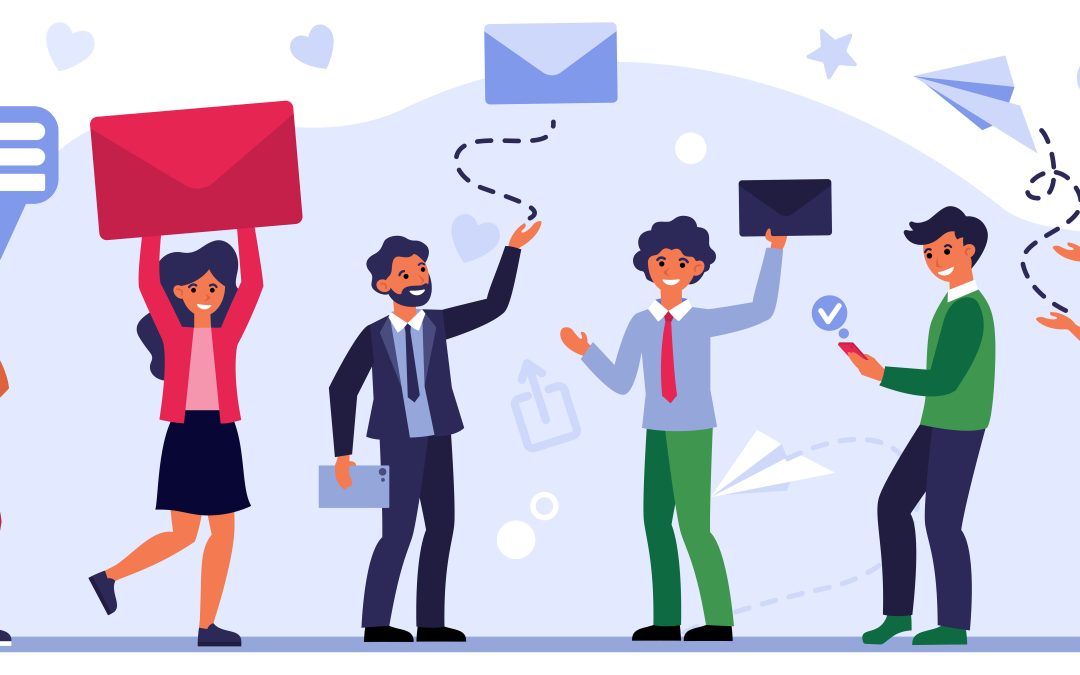Email marketing is like the Swiss Army knife of digital marketing. It is versatile, dependable, and essential for every campaign. Consider this: nearly everyone who is anyone in the business world has an email address, which they check multiple times a day. According to Radicati’s Email Statistics Report, over half of the world’s population uses email, and this number is only growing.
What’s more, email allows you to craft personalized messages that can be tailored to meet the needs and interests of your target audience. This level of personalization is hard to achieve through other marketing channels and is key to building strong relationships with prospective leads.
High ROI
If there’s one thing that’ll make a business perk up its ears, it’s hearing about a good return on investment (ROI). With email marketing, you’re in luck. It is noted that the average ROI for email marketing is about $42 for every $1 spent. This staggering figure puts email marketing at the top of the list for cost-effective marketing strategies, especially when compared to more expensive digital marketing channels like paid search or social media advertising.
Integrating Email with Other Marketing Channels for Enhanced Impact
To truly harness the power of email in B2B lead generation, it’s essential to integrate it seamlessly with other marketing channels. This multi-channel approach ensures that your message reaches your audience through various touchpoints, increasing the likelihood of conversion and strengthening your overall marketing strategy.
1. Multi-Channel Synergy: Combining email with social media, content marketing, and digital advertising creates a unified voice across all platforms. For instance, promoting a whitepaper on LinkedIn and then following up with an email campaign that provides additional insights on the topic can significantly boost engagement rates. Similarly, using targeted Facebook ads to increase subscriptions to your email list can expand your reach and bring more qualified leads into your sales funnel.
2. The Role of Content in Cross-Channel Marketing: Content is king in digital marketing, and its effective use across channels can set your B2B company apart. By developing high-quality, valuable content and distributing it through email, blogs, webinars, and social media, you establish your brand as a thought leader in the industry. This not only attracts more leads but also builds trust and credibility with your audience.
3. Analytics and Continuous Improvement: Using analytics tools like Google Analytics or those provided within email marketing software can help you track the effectiveness of your integrated marketing campaigns. These insights allow you to see which channels drive the most engagement and conversions, enabling you to allocate resources more effectively and tailor your strategies to meet your audience’s preferences.
Tools That Enhance Email Marketing Efficiency
Employing the right tools can transform your email marketing from good to great. Here are a few top-tier tools that you definitely want to consider:
1. HubSpot: Beyond just email, HubSpot offers a full suite of sales, marketing, and service software that integrates seamlessly with your email campaigns. It’s particularly beneficial for nurturing leads through automated workflows and detailed analytics.
2. Mailchimp: Known for its user-friendly interface, Mailchimp is a great tool for creating, sending, and analyzing email campaigns. It also offers segmentation features, A/B testing, and integrations with a multitude of other platforms.
3. Constant Contact: Ideal for small to medium-sized businesses, Constant Contact excels with an intuitive interface and robust editing tools to create engaging emails that drive results.
4. Salesforce Pardot: Specifically designed for B2B marketing automation, Pardot integrates deeply with Salesforce CRM, enhancing alignment between sales and marketing teams and providing sophisticated lead scoring capabilities.
Using Email for Lead Nurturing
One of the biggest advantages of email in B2B marketing is its ability to nurture leads. With strategic follow-up emails based on specific customer actions or timelines, businesses can keep potential clients engaged throughout the sales funnel. For instance, sending a welcome email after a sign-up, followed by industry insights, and eventually introducing your service offerings, can effectively guide a lead from awareness to decision-making.
The Power of Segmentation and Personalization
Segmentation involves dividing your email list into specific groups based on criteria like industry, company size, or position in the sales funnel. This strategy allows for more targeted and relevant communication, which significantly increases engagement rates. Coupled with personalization, where emails address the recipient by name or reference their specific needs, segmentation makes email an incredibly powerful tool for converting prospects into loyal customers.
Conclusion
In the race to capture and convert leads, it’s easy to get caught up in the newest and shiniest tech offerings. However, the enduring effectiveness of email marketing in the B2B sector is a testament to its fundamental role in lead generation. With the right approach and tools, email not only competes with but can surpass other marketing channels in both reach and ROI.
Email isn’t going anywhere. So, for businesses looking to enhance their lead generation efforts, it’s clear: ignoring email marketing isn’t just a missed opportunity it’s a strategic misstep. Ready to amp up your email marketing game? TechConnectr is here to help craft and execute a winning strategy tailored just for you.
Ready to give your B2B marketing strategy a boost with powerful email marketing tools and techniques?
Reach out to our team at TechConnectr for expert guidance!

